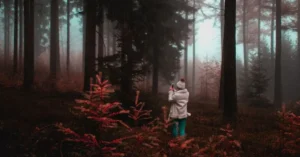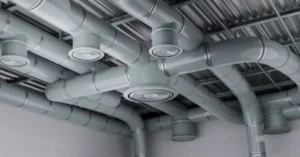Petrified wood is one of nature’s most fascinating geological phenomena. It is a type of fossilized wood that has undergone a process of mineralization over millions of years. This transformation replaces the organic material of the wood with minerals, such as quartz, silica, and opal, while retaining the original structure of the tree.
If you’ve ever wondered about how wood forms, its uses, or its value, this guide will provide an in-depth look at this ancient natural wonder.
⏳ How is Petrified Wood Formed?
The formation of petrified wood is a process that takes millions of years and requires very specific conditions. Here’s how it happens:
- Tree Burial – When a tree falls and gets buried under layers of sediment, mud, or volcanic ash, it is protected from normal decay caused by oxygen and microbes.
- Mineral Infusion – Over time, groundwater rich in minerals, such as silica, calcium carbonate, and iron oxide, seeps into the wood’s pores.
- Replacement Process – The organic material slowly decomposes and is replaced with minerals, preserving the cell structure of the tree.
- Hardening Over Time – The result is a stone-like fossil that retains the appearance of wood but is entirely mineralized.
🌍 Where is Petrified Wood Found?
The wood can be found in various parts of the world, especially in areas where ancient forests once thrived. Some of the most famous locations include:
🏜️ United States
- Petrified Forest National Park (Arizona) – One of the largest and most well-preserved collections of petrified wood in the world.
- Yellowstone National Park (Wyoming) – Home to fossilized trees from prehistoric forests.
- Colorado and Utah – Rich in wood deposits from the Mesozoic era.
🌎 Other Notable Locations
- Argentina – Patagonia houses vast petrified forests that date back 90 million years.
- Indonesia – Produces high-quality wood, often used for decorative purposes.
- Egypt – Home to petrified forests in the Eastern Desert.
- Madagascar – Known for its colorful fossilized wood with unique mineral patterns.
💎 What Makes This Wood Valuable?
The value of petrified wood depends on several factors, including:
🔹 Rarity and Size
- Large, well-preserved pieces are more valuable than smaller, fragmented ones.
- Some pieces display intricate growth rings and bark patterns, making them more desirable.
🎨 Color Variations
- The mineral composition determines the colors of wood. Common colors include:
- Red and Brown (Iron Oxide)
- Yellow and Orange (Manganese)
- Blue and Green (Copper and Cobalt)
- Black and White (Carbon and Silica)
- Rare and vibrant colors tend to be more valuable.
🌟 Polish and Craftsmanship
- This wood is often cut and polished into slabs, jewelry, or decorative items.
- Highly polished specimens with unique patterns are highly sought after by collectors.
🔬 Scientific Importance of Petrified Wood
This wood provides invaluable insights into Earth’s ancient ecosystems. It allows scientists to:
- Study prehistoric climates by analyzing tree rings.
- Understand plant evolution and how species adapted over time.
- Trace geological changes in mineral composition across different eras.
Many museums and research institutions showcase fossilized wood as part of their paleontology exhibits.
🏡 Uses of Petrified Wood
Beyond its scientific importance, petrified wood has practical and decorative applications, including:
🏗️ Home Decor and Furniture
- Tabletops and countertops – Polished slabs make stunning statement pieces.
- Flooring and wall panels – Unique textures and colors add a natural touch to interiors.
- Sculptures and carvings – Often used for artistic displays.
💍 Jewelry and Accessories
- Necklaces, rings, and bracelets – Crafted from polished petrified wood.
- Healing and metaphysical uses – Some believe petrified wood has grounding and protective properties.
🏞️ Landscaping
- Garden pathways – Used as stepping stones or decorative features.
- Rock gardens – Adds a prehistoric touch to outdoor designs.
⚠️ How to Identify Authentic Petrified Wood
If you’re buying this wood, watch out for imitations. Here’s how to verify authenticity:
- Texture and Hardness – Genuine petrified wood is extremely hard and has a smooth texture when polished.
- Wood Grain Preservation – Look for visible tree rings or bark structures.
- Weight – Since it’s mineralized, it is heavier than regular wood.
- UV Test – Some authentic pieces glow under ultraviolet light due to mineral content.
🏛️ Legal and Ethical Considerations
Petrified wood is a protected resource in many areas. Here’s what you should know before collecting or purchasing:
- National Parks Regulations – It is illegal to remove petrified wood from protected parks, such as Petrified Forest National Park in Arizona.
- Ethically Sourced Specimens – Always buy from reputable dealers who source wood legally.
- Fossil Protection Laws – Some countries have strict fossil trading laws to prevent illegal excavation.
📢 Conclusion
Petrified wood is more than just a beautiful fossil; it’s a glimpse into Earth’s prehistoric past. Whether you’re a collector, a scientist, or someone who appreciates natural art, this ancient relic offers something fascinating for everyone.
❓ Frequently Asked Questions (FAQ)
🔹 Is petrified wood a rock or wood?
This wood is a fossilized form of wood, meaning it has transformed into stone through mineralization over millions of years.
🔹 How old is petrified wood?
Most petrified wood is 100 to 200 million years old, though some specimens date back 500 million years.
🔹 Can you collect petrified wood?
Yes, but only from legal sources. Removing wood from national parks is prohibited.
🔹 What is petrified wood worth?
Prices range from a few dollars for small pieces to thousands of dollars for rare, large, or colorful specimens.
🔹 Does petrified wood have healing properties?
Some believe wood promotes stability, grounding, and protection, though this is more of a spiritual belief than a scientific fact.









